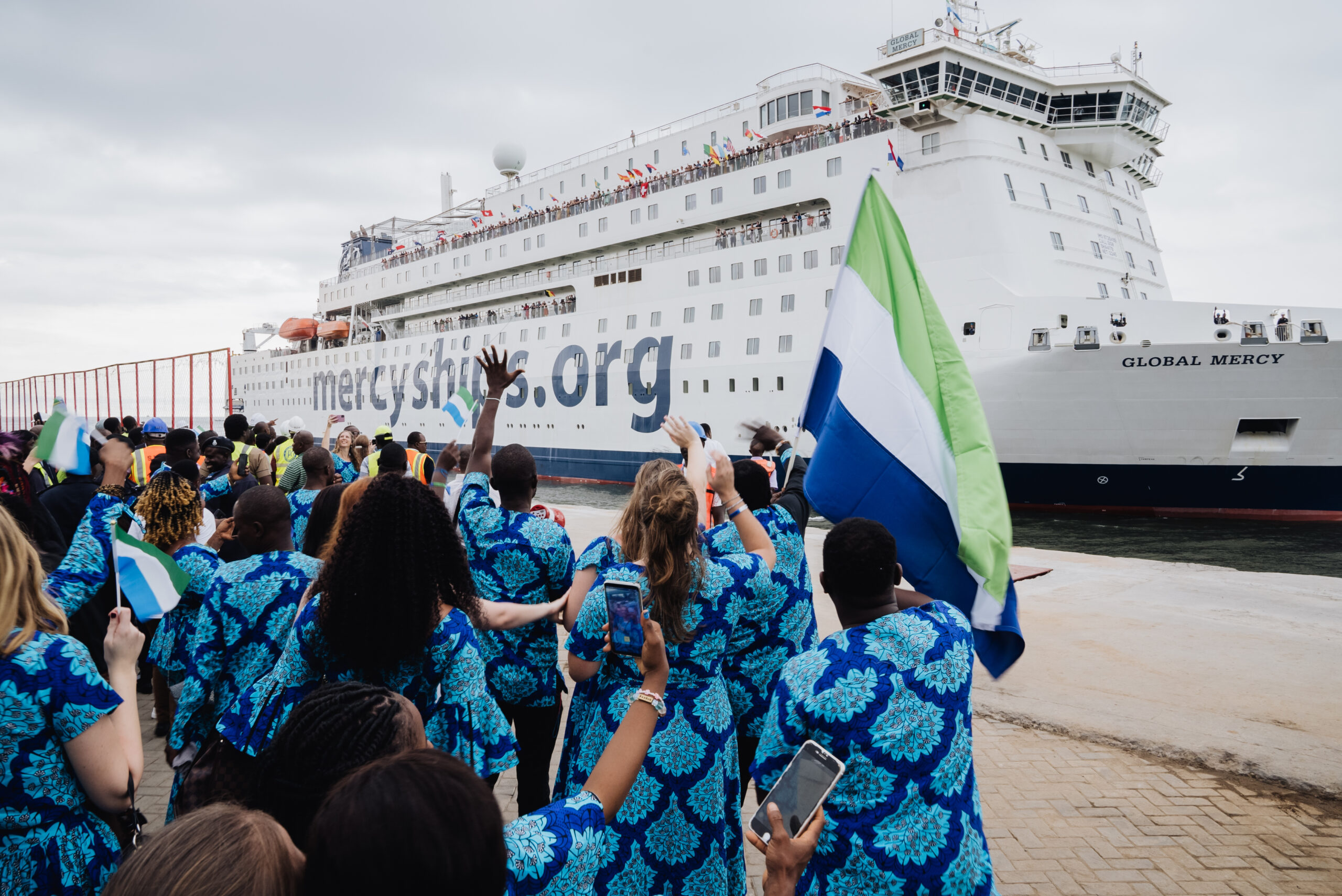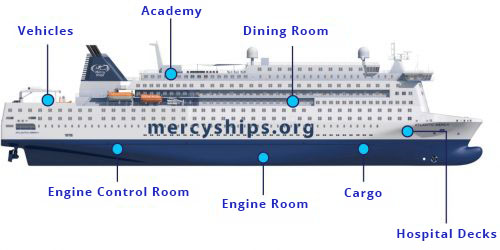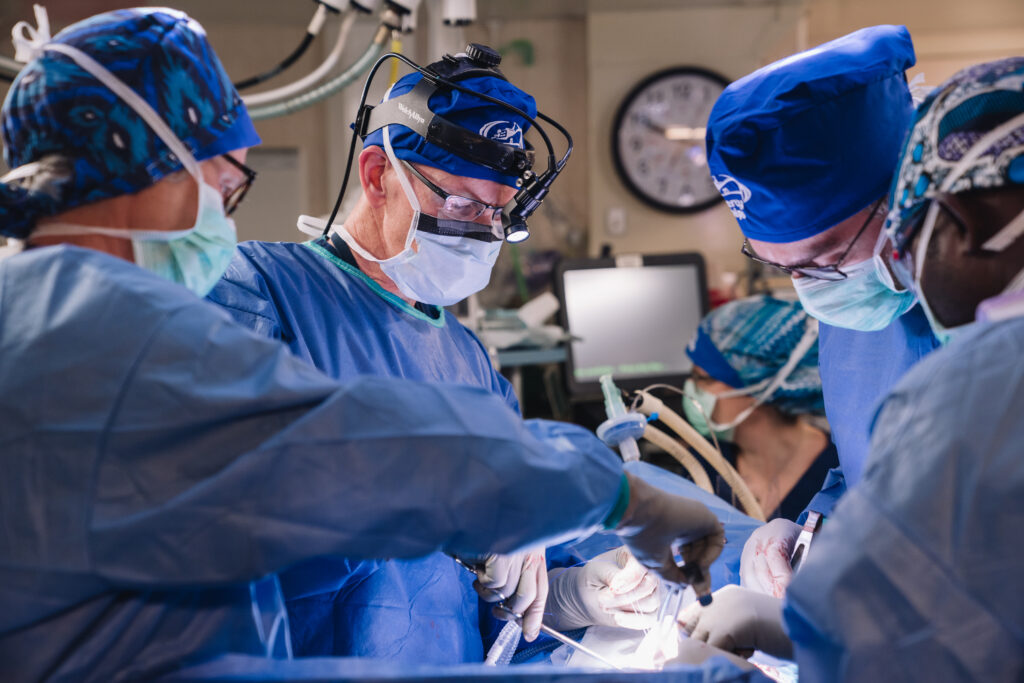Global Mercy
World's Largest NGO Hospital Ship
According to the Lancet Global Surgery 2030 Report, over 16 million people die each year due to lack of surgical care; Mercy Ships is building a response to this world problem for the future. The organization aims to increase its work with partner nations in Africa to help meet this challenge.
The Ship
The Global Mercy™ is delivering a safe and clean environment to various African nations, providing help and resources from some of the most well-trained physicians in the world. Over the vessel’s 50 year expected lifespan, it is estimated that more than 150,000 lives will be changed on board through surgery alone.
The 174-meter, 37,856-ton ship has six operating rooms and house over 600 volunteers from around the globe representing many disciplines including surgeons, maritime crew, cooks, teachers, electricians, the host staff and more. Each year, more than 1,500 volunteer professionals from over 60 countries serve on board.
The ship also features a 682-seat auditorium, student academy, gymnasium, pool, café, shop and library – all of which have been designed to accommodate up to 950 crew on board when docked in port.
Field Services
The Global Mercy™ started its first field service in Africa in 2022. The ship has conducted 2 field services, first serving Senegal and The Gambia, then Sierra Leone.

Filtering & treating AC condensate water for technical use will reduce potable water use by approximately 50%.
Ship systems provide reliable and efficient power, clean water, and air conditioning for the hospital and crew.
High efficiency air conditioning systems reduce total energy consumption by approximately 15%.
641 Crew capacity: Medical, Technical, Non-tech/Non-med & Family.
Hospital area is 7,000 m2.
Ship services are designed to host up to 950 people including local day-crew.
Layout of the new ship:

Ship specifications:
| Length: | 174 m | Gross Tonnage: | 37,856 |
| Breadth: | 28.6 m | Decks: | 12 |
| Draft: | 6.1 m | Main Engines: | 4 x Warsila 6L32 with 2 X ABB Azipods |
Who is in charge of what:
| Built by: | Xingang Shipyard (CSSC) – Tijanjin, China |
| Project management: | Stena RoRo – Gothenburg, Sweden |
| Construction design: | Deltamarin – Turkeu, Finnland |
| Brokerage: | BRS, Genf |
| Surveyed by: | Lloyd’s Register – UK |
| Flagged: | Malta |
The Hospital
The hospital area is 7,000 m2. In addition to providing surgeries, the Global Mercy™ is outfitted with state-of-the-art training spaces including a simulation lab with virtual and augmented reality, mannequins and other training tools and simulated post-op care space, which allow trainers to simulate local conditions and limitations in order to teach best practices in low-resource environments.
The Global Mercy™ joined the current flagship Africa Mercy in 2022, more than doubling the impact of volunteers and services provided by Mercy Ships.

Hospital wards – Deck 4

Surgical suite – Deck 3

Crew facilities include:
| Auditorium: | 682 seats | Gymnasium |
| Academy: | 125 students | Cafe & Shop |
| Patient Capacity: | 199 volunteers | Pool |
| Surgical Suite: | 6 operating rooms | Library |
All pre-operative and post-operative work include:
| Radiology | with X-Ray & CT Scan |
| Screening/Admissions | |
| Rehab | |
| Outpatient Care |
Training spaces include:
- Simulation Lab with virtual and augmented reality
- Simulated Post op Care Space
- Mannequins & Other Training Tools
FAQ
According to the Lancet Global Surgery 2030 Report, an estimated number of 16.9 million people die yearly due to lack of access to surgical care. Over 93 percent of the population of sub-Saharan Africa do not have access to safe and timely surgery.
Over 40% of the world’s population lives within 100 miles of the coast. Our ships deliver a state-of-the-art hospital to port cities, providing a controlled, safe and clean environment for patients and volunteers.
Energy-efficient LEDs in light fixtures. Low sulfur marine fuels help reduce contaminants. Sailing at low speeds between ports to reduce carbon emissions. Complying to international (MARPOL 73-78) standards, with regulate what ships do with waste, oil, sewage, garbage and air pollution.
Mercy Ships currently complies with many maritime industry standards that regulate what the ships do with waste, oil, sewage, garbage and air pollution — one of which is the International Convention for the Prevention of Pollution from Ships Maritime Pollution (MARPOL 73-78) standards. Additionally, to lower its CO2 footprint, Mercy Ships utilizes marine fuels that meet the International Maritime Organization (IMO) 0.5% Sulphur cap – which helps reduce carbon emissions. Additionally, the ships also sail at low speeds between ports.
The simulation lab allows trainers to simulate local conditions & limitations in order to teach best practices in low-resource environments.
Training opportunities include:
- Post-op scenario training for nursing teams
- Surgical technical teams basic skills training
- Basic surgical skills training to prepare trainees for live surgical experience
- Live surgical mentoring in selected high demand, elective procedures

